Comprehensive Treatment Options for Plantar Spurs
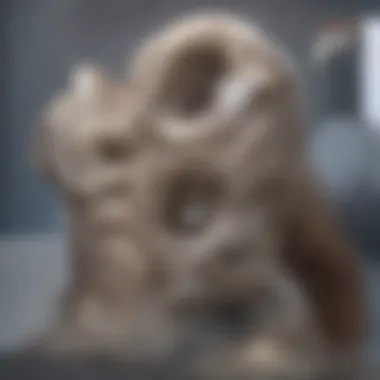
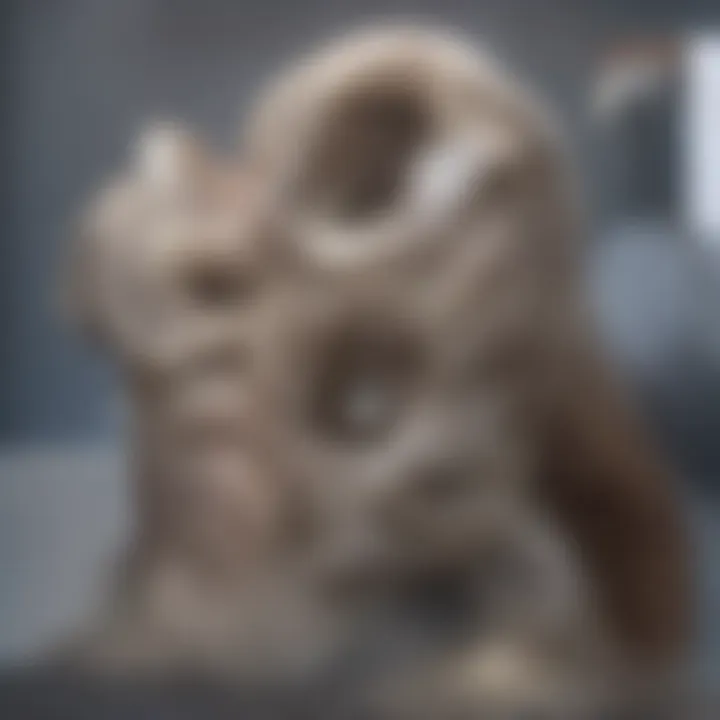
Intro
Plantar calcaneal spurs, also known as bone spurs on the heel, often result in significant discomfort and affect daily activities. The presence of a spur can lead to pain when walking, standing, or during prolonged periods of inactivity. Understanding the treatment options available for this condition is crucial for patients seeking relief. This analysis intends to explore a variety of methods ranging from conservative to surgical interventions, as well as discussing the underlying causes and preventative strategies.
Research Context
Background and Rationale
In the field of podiatry, plantar calcaneal spurs are a common diagnosis. The condition is frequently associated with plantar fasciitis, contributing to heel pain. Recent studies indicate a relationship between the presence of spurs and various activities and lifestyle factors. Individuals with high body mass and those who partake in repetitive weight-bearing activities are more susceptible to developing this condition. Understanding these correlations helps in devising effective treatment strategies.
Literature Review
Existing literature provides a wealth of information regarding the effectiveness of different treatment approaches for plantar calcaneal spurs. A comprehensive review highlights conservative methods like physical therapy, footwear modifications, and orthotic devices as first-line treatments. Surgical options, such as spur removal, are discussed primarily in cases where conservative treatments fail. Evidence suggests that while surgical intervention can provide relief, it often comes with significant risks and prolonged recovery periods.
Treatment Modalities
Treatment options for plantar calcaneal spur can be divided into two primary categories: conservative treatments and surgical interventions.
Conservative Treatments
- Physical Therapy: A tailored physical therapy program can strengthen muscles in the foot and improve flexibility, thus alleviating pain.
- Orthotic Devices: Customized arch supports can redistribute pressure on the heel, providing relief.
- Pain Relievers: Nonsteroidal anti-inflammatory drugs (NSAIDs) like ibuprofen are often recommended for pain management.
- Corticosteroid Injections: These can provide temporary but significant relief from inflammation and pain.
Surgical Interventions
- Surgical Removal of the Spur: This option is considered when conservative measures fail. The procedure involves the extraction of the spur, with varying success rates reported in studies. While immediate pain relief is often achieved, the potential for complications exists.
- Endoscopic Procedures: These are less invasive techniques aimed at removing the spur and require shorter recovery times.
"The choice between conservative and surgical treatment should be guided by the severity of symptoms and the patient’s lifestyle demands."
Closure
In summary, plantar calcaneal spurs present a multifaceted challenge in treatment. Both conservative and surgical methods have their respective place. Understanding the appropriate pathways to recovery requires consideration of individual patient needs and the underlying causes of the condition. This overview serves as a foundational exploration for healthcare professionals and patients, facilitating informed decision-making for effective management.
Prolusion to Plantar Calcaneal Spur
The topic of plantar calcaneal spur is critical for understanding the broad spectrum of foot and heel ailments. Various treatment options exist, and navigating these can greatly affect recovery and management. Plantar calcaneal spur specifically refers to bone growth on the underside of the heel, often associated with painful inflammation. Knowing how to identify and treat this condition can help individuals regain mobility and improve their quality of life.
Definition and Overview
Plantar calcaneal spur, commonly referred to as a heel spur, is a bony protrusion that develops on the calcaneus or heel bone. It often manifests as a result of chronic stress on the plantar fascia, the connective tissue that facilitates walking and movement. Symptoms may include pain, especially during morning hours or after prolonged inactivity. Diagnosis usually involves clinical evaluation and imaging.
Prevalence and Demographics
Plantar calcaneal spurs are prevalent among various demographics. The condition frequently affects middle-aged individuals and those with active lifestyles. Research indicates a higher occurrence among athletes and individuals who spend long hours in weight-bearing positions. According to studies, approximately 10% of the general population may experience symptoms related to heel spurs at some point in their lives. Awareness of this common condition is essential for early detection and effective management.
Associated Symptoms and Impact on Daily Life
The symptoms associated with plantar calcaneal spurs extend beyond isolated heel pain. Patients often report difficulty walking, stiffness, and discomfort that can radiate up the leg. This can interfere with daily activities such as exercise, work, and even basic mobility tasks. The emotional toll can be significant, leading to decreased activity levels and overall dissatisfaction. Addressing these symptoms promptly can alleviate pain and restore functionality, underscoring the importance of understanding this ailment.
Etiology of Plantar Calcaneal Spur
Understanding the etiology of plantar calcaneal spur is crucial for both diagnosis and treatment. The causes of this condition are multifaceted, involving a combination of mechanical stress, inflammatory responses, and lifestyle factors. Recognizing these underlying contributors enables healthcare professionals to tailor interventions effectively and helps patients make informed decisions about their management strategies.
Mechanical Factors
Mechanical stress is a primary factor in the development of a plantar calcaneal spur. Excessive load on the heel can lead to micro-tears in the plantar fascia, a thick band of tissue that runs along the bottom of the foot. When the plantar fascia experiences repeated strain, bone growth can occur at the heel, forming a spur. High-impact activities such as running or jumping exacerbate this risk.
Common scenarios contributing to excess mechanical stress include:
- High Body Weight: Increased weight adds more strain to the heel and foot structure.
- Foot Structure: Flat feet or high arches can distribute pressure unevenly, leading to stress concentration in the heel area.
- Improper Footwear: Wearing shoes that do not provide adequate support can also contribute to the development of spurs.
Addressing mechanical factors involves analyzing an individual’s biomechanics and making necessary adjustments to their physical activity and footwear.
Inflammatory Conditions
Inflammatory processes may also play a significant role in the formation of calcaneal spurs. Conditions such as plantar fasciitis are often present alongside spurs, causing discomfort and limiting mobility. Increased inflammation leads to pain and discomfort, making it vital to identify any underlying inflammatory conditions.
In many cases, inflammation is due to:
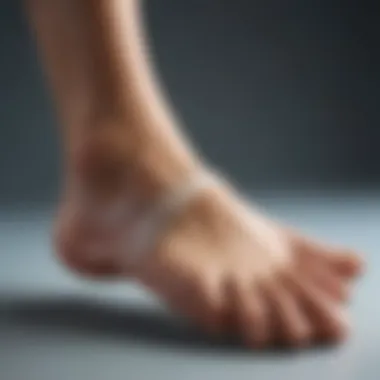
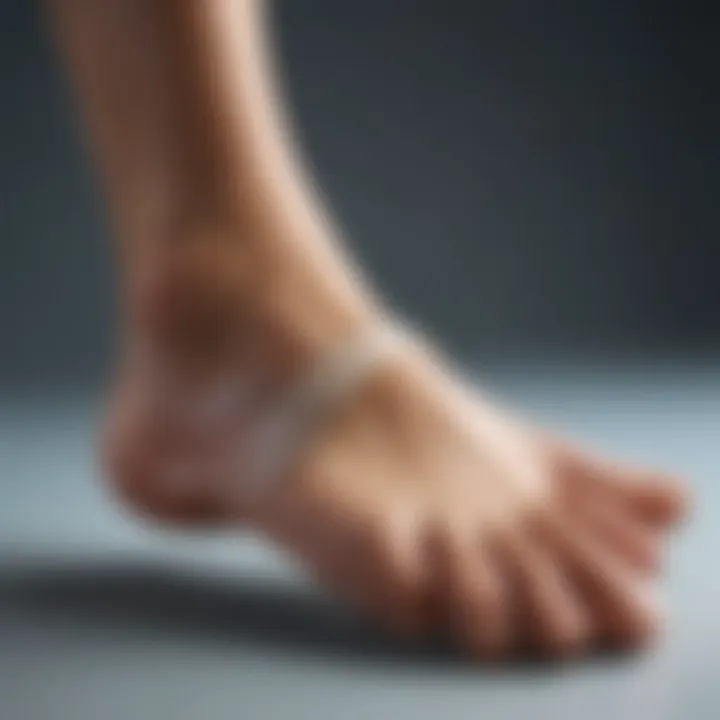
- Overuse: Repetitive strain without adequate rest can escalate inflammatory responses in the foot.
- Injury: Acute trauma to the heel area can also trigger inflammation, leading to spur development.
Effective management of inflammation through medication and physical therapy can reduce pain and improve function.
Occupation and Lifestyle Contributions
Certain occupations and lifestyle choices significantly contribute to plantar calcaneal spur development. Those who spend extended periods on their feet, such as factory workers or healthcare providers, are more susceptible.
Individuals engaging in:
- Weight-bearing Activities: The risk increases with jobs requiring prolonged standing or walking.
- Insufficient Foot Care: Ignoring foot health or neglecting recommended foot hygiene can prevent early intervention and lead to complications.
By acknowledging the impact of occupation and lifestyle, targeted strategies can be devised to minimize risk factors, thereby contributing to effective prevention and management of plantar calcaneal spur.
Diagnostic Approaches
In addressing plantar calcaneal spurs, accurate diagnostics are crucial. Identifying the presence and nature of the spur can guide treatment decisions and determine the severity of symptoms. This section delves into two prominent strategies for diagnosis: clinical evaluation and imaging techniques. Each plays a pivotal role in confirming the diagnosis and understanding the underlying factors that may contribute to the condition.
Clinical Evaluation
The first step in diagnosing a plantar calcaneal spur is a comprehensive clinical evaluation. This process typically begins with a thorough patient history. The healthcare provider collects information on symptoms, duration, and intensity of pain. The location of the discomfort is particularly instructive; patients often report pain that radiates through the heel or into the arch of the foot.
Upon patient history, the clinician performs a physical examination. During this part, they may assess the foot's structure and biomechanics, which involves looking for any signs of abnormality. Tenderness in the plantar fascia might be noted, as this structure commonly becomes inflamed in cases involving calcaneal spurs.
Also, practitioners will evaluate the range of motion in the foot, searching for any limitations that could be linked to the spur. Gait analysis might be conducted to see how the patient's walking pattern is affected. This evaluation is vital, as it helps tailor treatment options to the individual's specific needs.
Imaging Techniques
When clinical evaluation raises suspicion of a plantar calcaneal spur, advanced imaging techniques are often warranted for confirmation. The most common imaging method used is X-ray. X-rays can visibly reveal the bony spur and any related changes in the heel.
However, sometimes X-rays alone are not enough. In such cases, ultrasound or magnetic resonance imaging (MRI) may be employed. Ultrasound can provide real-time imaging, allowing physicians to view soft tissue inflammation around the spur. MRI, on the other hand, can give a more detailed view of both bony and soft tissue structures, providing insights into any accompanying conditions.
Imaging studies not only help confirm the diagnosis but can also assist in evaluating the severity of associated problems, such as plantar fasciitis or heel bursitis. This understanding is essential for developing an effective treatment plan.
In summary, a combination of clinical evaluation and imaging techniques offers a comprehensive approach to diagnosing plantar calcaneal spurs. With accurate diagnostics, healthcare professionals can determine the most appropriate course of action for relief and recovery.
The choices made during these diagnostic steps serve as the foundation for all further treatment approaches. Appropriate attention to detail here can lead to better patient outcomes and more targeted therapy options.
Conservative Treatment Options
Conservative treatment options form the cornerstone of managing plantar calcaneal spurs. These methods are often preferred initially because they are non-invasive and aim to alleviate pain and frustration. Beyond pain relief, conservative strategies also focus on enhancing mobility and improving overall foot health.
The importance of these approaches lies in their accessibility, cost-effectiveness, and versatility. They serve as a primary recourse for patients experiencing heel pain, and many can be performed at home or in outpatient settings. Addressing the specific elements of conservative treatment can provide a clearer picture of how each contributes to managing discomfort associated with plantar calcaneal spurs.
Physical Therapy and Exercises
Physical therapy is a critical component of conservative treatment. This approach often includes tailored exercise regimens that strengthen the muscles in the foot and lower leg. Such exercises can improve flexibility, balance, and endurance. A skilled physical therapist will evaluate the patient's specific condition and develop an individualized program.
Common exercises for plantar calcaneal spurs include:
- Stretching exercises for the Achilles tendon and plantar fascia.
- Strengthening exercises targeting intrinsic foot muscles.
- Balance exercises to enhance proprioception.
Regular engagement in physical therapy can lead to gradual improvements, reducing pain and avoiding further complications. Active participation from the patient is essential for optimal outcomes.
Insoles and Orthotics
Insoles and orthotics play a significant role in the management of plantar calcaneal spurs. These supportive devices help in redistributing pressure on the foot and minimizing strain on the plantar fascia. Custom orthotics, which are made to fit a person's specific foot structure, can offer enhanced support compared to off-the-shelf options.
The benefits of using insoles and orthotics include:
- Improved foot alignment, which can reduce discomfort.
- Shock absorption, enhancing cushioning under the heel.
- Adjustment of gait mechanics, leading to decreased workload on the plantar fascia.
While many people find relief with these devices, it is important to select the right kind for one’s individual needs and to allow for an adjustment period when starting with new products.
Medications and Anti-Inflammatory Treatments
Pharmacological approaches can be effective in managing pain and inflammation associated with plantar calcaneal spurs. Over-the-counter medications such as ibuprofen and naproxen are often recommended to reduce swelling and relieve pain. In some cases, stronger prescription medications may be necessary.
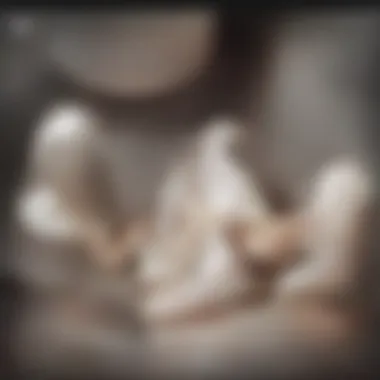
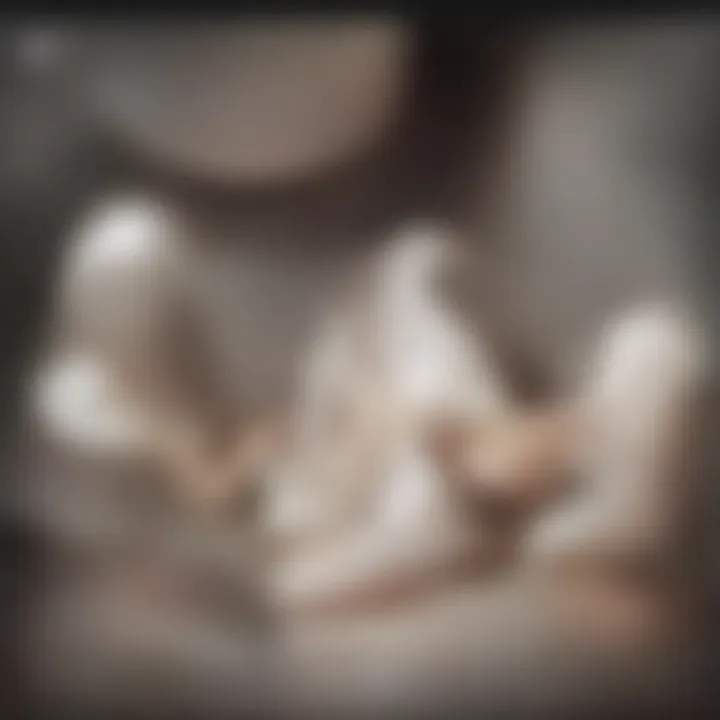
Alongside oral medications, topical anti-inflammatory treatments can also provide localized relief. Patients should always consult with healthcare providers before starting any new medication to ensure that it aligns with their specific health profiles and potential interactions with existing treatments.
Cold Therapy and Cryotherapy
Cold therapy is another common conservative treatment that can be particularly effective in managing pain and reducing inflammation. Applying ice or cold packs to the affected area can minimize swelling and numb sharp pain. This method can be easily used at home, making it highly accessible.
Cryotherapy, which involves exposure to cold temperatures for therapeutic purposes, may also be beneficial. Practitioners sometimes use cryotherapy to target deep tissues, promoting pain relief and encouraging healing. Patients may incorporate cold therapy into their daily routines, especially following activities that exacerbate their symptoms.
"A consistent approach that includes these conservative treatments can provide significant relief, enabling patients to regain function in their daily activities."
In summary, conservative treatment options are fundamental in managing plantar calcaneal spurs. By integrating physical therapy, orthotics, medications, and cold therapies, patients can often experience meaningful improvements in function and comfort, paving the way for enhanced quality of life.
Advanced Non-Surgical Interventions
Advanced non-surgical interventions are vital in managing plantar calcaneal spur, a condition that can lead to persistent heel pain and mobility limitations. These methods aim to alleviate symptoms while avoiding the risks and recovery time associated with surgical procedures. Their importance lies in both the immediate relief they offer and the potential long-term benefits for patients experiencing ongoing discomfort.
Corticosteroid Injections
Corticosteroid injections are a commonly employed technique in the treatment of plantar calcaneal spur. They contain anti-inflammatory properties that help reduce pain and improve function in the affected area. When corticosteroids are administered directly into the heel, inflammation is significantly decreased, leading to rapid symptomatic relief for many patients. This option is particularly beneficial for individuals who have not responded adequately to conservative treatments, such as physical therapy or medication.
However, it is essential to consider that repeated corticosteroid injections can weaken local tissues and lead to possible complications such as fat pad atrophy or plantar fascial rupture. Therefore, healthcare providers typically limit the number of injections within a specific timeframe. The injection itself is usually performed under ultrasound guidance to ensure precise placement, enhancing efficacy and minimizing discomfort.
Extracorporeal Shock Wave Therapy
Extracorporeal shock wave therapy (ESWT) is another promising non-surgical intervention. This method utilizes acoustic waves to stimulate healing in painful areas. The shock waves trigger localized micro-traumas that promote circulation and tissue regeneration. For those suffering from plantar calcaneal spur, ESWT can provide significant relief. Many patients experience reduced pain levels and improved overall function post-treatment.
The procedure involves multiple sessions, and while some notice benefits after the first session, others may require up to three treatments for optimal outcomes. It is generally considered safe, with minimal side effects, though some patients report transient discomfort following the session. Research suggests that ESWT is particularly effective for chronic cases, making it a valuable option in the treatment landscape.
Platelet-Rich Plasma Injections
Platelet-rich plasma (PRP) injections have gained traction in recent years for their innovative approach to healing. This method involves drawing a small amount of the patient's blood, processing it to concentrate the platelets, and then injecting this rich substance into the affected area. The growth factors released from the platelets promote tissue healing, which can be particularly beneficial for conditions like plantar calcaneal spur.
Studies indicate that PRP injections can yield substantial improvements in pain and function. The biological healing properties of the plasma contribute to repairing damaged tissues, potentially reducing reliance on more invasive interventions later on. Nonetheless, the exact efficacy can vary among patients, and multiple sessions may be necessary to achieve the desired results.
The value of advanced non-surgical interventions in treating plantar calcaneal spur cannot be understated, as they provide options for those seeking relief without the risks associated with surgery.
Surgical Treatment Options
Surgical intervention for plantar calcaneal spur is a critical topic within this comprehensive overview. It serves as a vital consideration when conservative measures fail to provide relief. Understanding the indications for surgery, types of procedures available, and the recovery process is essential for patients and healthcare professionals alike. Surgical treatments offer the potential for significant pain reduction and improved function when conservative options fall short.
Indications for Surgery
Surgery is often recommended after several factors are considered. One major indication for surgery is the persistence of pain despite extensive conservative treatment, which usually lasts for six months or longer. Individuals who experience severe limitations in daily activities, impacted quality of life, or debilitating discomfort may also warrant surgical options. Factors like age, weight, and overall health are also evaluated to ensure that a patient can safely undergo surgical procedures.
Types of Surgical Procedures
Several surgical procedures are used to treat plantar calcaneal spur, each with its own techniques and benefits.
Calcaneal Spur Resection
Calcaneal spur resection involves surgically removing the spur itself. This procedure is suitable for patients who have a well-defined spur causing chronic pain. A key characteristic of this approach is its direct focus on eliminating the source of discomfort. The benefit of this type of surgery includes immediate symptom relief for many patients. However, some disadvantages may include risks related to the procedure itself and the necessity for rehabilitation.
Endoscopic Procedures
Endoscopic procedures are minimally invasive options that utilize small incisions and specialized instruments. The key feature of this technique is its ability to visualize the spur and surrounding structures clearly without requiring extensive tissue disruption. A primary benefit is reduced postoperative pain, shorter recovery time, and minimal scarring. However, these procedures may not be suitable for all patients depending on spur size and location.
Fasciotomy
Fasciotomy refers to a surgical technique that involves cutting the fascia to relieve tension and pain. This method is often considered for patients suffering from fasciitis accompanying the spur. An appealing characteristic of fasciotomy is its focus on decompressing the plantar fascia, providing potential relief in cases of severe inflammation. It can be beneficial for those who do not respond to other treatments but may carry the downside of recovery times and the need for careful management post-surgery.
Postoperative Recovery
Postoperative recovery is a vital aspect of the surgical process, as it significantly influences the overall outcome. Recovery can vary depending on the type of surgery performed. Patients usually follow a structured rehabilitation program, which may include rest, physical therapy, and gradual reintroduction to weight-bearing activities. The goal is to enhance healing and restore optimal function. Regular follow-ups with healthcare providers ensure that any complications or concerns are addressed promptly, thereby aiding the recovery process.
Effective management of postoperative care is essential for maximising the benefits of surgical treatments.
This section has explored surgical treatment options, including indications and types of procedures, elucidating how they contribute to managing plantar calcaneal spur. Understanding these elements offers comprehensive insight into the treatment landscape.
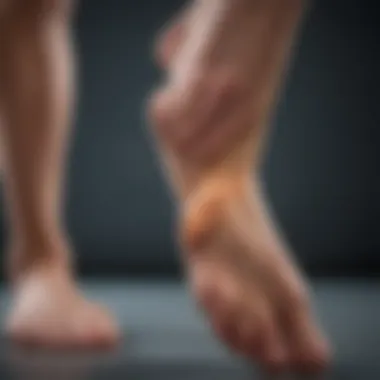
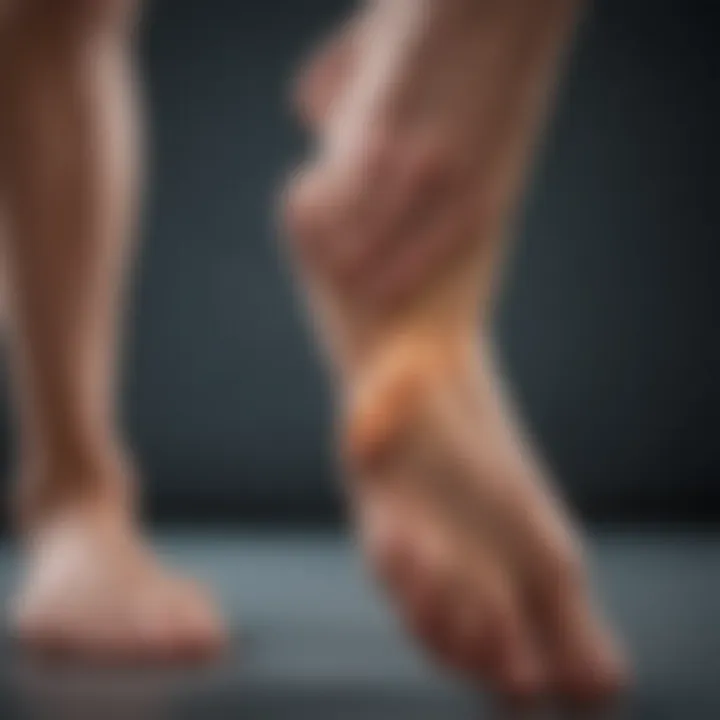
Combining Treatment Approaches
Combining treatment approaches for plantar calcaneal spur is crucial for optimizing recovery and improving overall patient outcomes. This condition can vary significantly among individuals, demanding a tailored strategy that addresses both the symptoms and the underlying causes. Incorporating multiple modalities can enhance treatment efficacy, offer a more comprehensive pain management strategy, and potentially expedite healing.
A multimodal approach allows healthcare professionals to address various aspects of the condition simultaneously. For instance, combining physical therapy techniques with anti-inflammatory medications can tackle inflammation effectively while promoting mobility through specialized exercises. This method not only alleviates pain but also reinforces the structural integrity of the foot, therefore reducing the risk of recurrence.
Multimodal Treatment Strategies
Implementing multimodal treatment strategies means selecting a combination of therapies that work synergistically. These can include:
- Physical therapy: Engaging in tailored exercises designed to enhance flexibility and strengthen foot muscles.
- Insoles and orthotics: Custom shoe inserts support proper foot alignment and cushioning to reduce pressure on the heel.
- Medications: Nonsteroidal anti-inflammatory drugs (NSAIDs), such as ibuprofen, can manage pain and inflammation alongside other treatments.
- Cold therapy: Applying ice packs can help alleviate acute pain and reduce swelling.
"Combining various treatment modalities often provides a more effective solution than relying solely on one method."
The fusion of these strategies improves the likelihood of successfully managing pain and facilitates a quicker return to daily activities. Notably, the selection of treatments should be tailored based on the patient’s specific needs, activity levels, and response to previous interventions.
Monitor and Adjust Treatment Plans
Continuous monitoring and adjusting treatment plans are vital components of managing plantar calcaneal spur effectively. After initiating a treatment regimen, regular assessments help determine its effectiveness and guide any necessary modifications.
For example, if a patient is not experiencing relief from pain, it may indicate that the chosen modalities may need to be intensified or altered. Substituting, adding, or temporarily suspending certain treatments based on patient feedback can lead to superior results.
Monitoring may include:
- Regular follow-ups: Check-ins to assess pain levels and functional improvements.
- Patient feedback: Listening to the patient’s experiences and concerns can guide adjustments.
- Physical assessments: Evaluating changes in mobility, strength, and overall function.
This dynamic approach allows for flexibility, ensuring that treatments remain aligned with the patient’s evolving needs and experiences. The objective is to co-create a treatment plan that keeps the patient engaged and motivated throughout their recovery journey.
Preventative Measures
Preventative measures play a crucial role in managing plantar calcaneal spur, offering individuals ways to reduce their risk of developing this painful condition. Addressing lifestyle factors and making informed decisions about footwear are two primary components of prevention. Understanding these elements can significantly improve one’s quality of life, particularly for those at risk.
Lifestyle Modifications
Making appropriate lifestyle modifications can help alleviate the pressure on the plantar fascia and the heel.
- Weight Management: Maintaining a healthy weight reduces stress on the feet and can lower the chance of developing a spur. Excess weight places additional strain on the heel, exacerbating any underlying issues.
- Physical Activity: Engaging in low-impact exercises, such as swimming or cycling, helps maintain fitness without putting undue stress on the feet.
- Stretching and Strengthening: Regular stretching exercises for the calves and Achilles tendon can improve flexibility, while strengthening the intrinsic muscles of the foot will promote better arch support.
- Rest and Recovery: For individuals who are frequently on their feet, taking regular breaks is essential. Allowing time for recovery can help prevent overuse injuries that lead to the formation of spurs.
"An ounce of prevention is worth a pound of cure."
These modifications not only promote foot health but also lead to overall well-being. Making these small changes can translate into significant long-term benefits for foot health.
Footwear Recommendations
The selection of appropriate footwear is a cornerstone of prevention for plantar calcaneal spur. Poor footwear choices can contribute directly to the development of this condition. Here are some recommendations:
- Supportive Shoes: Opt for shoes that provide adequate arch support and cushioning. Brands known for their supportive shoes include New Balance and Brooks.
- Avoiding High Heels: High-heeled shoes place excessive pressure on the forefoot and heel. Opting for flatter shoes can alleviate this pressure.
- Custom Insoles: Consider using custom-made insoles or orthotics. These can help redistribute pressure and provide the necessary support to the arch and heel.
- Proper Fit: Ensure shoes fit well. Shoes that are too tight or too loose can cause friction and discomfort, leading to complications.
Incorporating these footwear strategies can reduce the risk of developing plantar calcaneal spur and enhance comfort during daily activities. These precautions serve not only as a barrier against heel pain but also contribute to a better overall condition of your feet.
Closure and Future Directions
The exploration of treatment options for plantar calcaneal spur culminates in an essential understanding of the last section of this article. It emphasizes the importance of evaluating treatment efficacy and remaining adaptive to ongoing research developments in the field. This insight is crucial for healthcare practitioners and patients alike, as it addresses how to navigate treatment pathways effectively.
Summary of Treatment Efficacy
Treatment efficacy varies significantly based on the individual’s condition and response to different modalities. A systematic review shows that conservatives interventions such as physical therapy, insoles, and medications generally yield favorable outcomes for a significant portion of patients. Moreover, advanced non-surgical interventions like corticosteroid injections and shock wave therapy have demonstrated considerable success in reducing symptoms when conservative strategies fail. However, some individuals may still require surgical options, particularly when conservative treatments do not provide lasting relief.
The following points summarize the efficacy of various treatment options:
- Physical Therapy and Exercises: Many patients experience improvement through tailored exercises that focus on strengthening and flexibility.
- Insoles and Orthotics: These can provide immediate relief and positive results over the long term, as correct foot alignment reduces impact on the heel.
- Medications: Anti-inflammatory medications play a pivotal role in managing pain and reducing inflammation.
- Surgical Treatment: Procedures like calcaneal spur resection are generally effective for those who do not respond to prior treatments.
Although many options exist, treatment must be personalized, considering factors such as age, activity level, and comorbidities.
Emerging Research and Innovations
Ongoing research continues to refine and expand our understanding of plantar calcaneal spur treatment. Innovations are particularly noteworthy in terms of biological therapies and advanced imaging technologies that can help tailor interventions better.
Recent studies are exploring the efficacy of platelet-rich plasma (PRP) injections, which aim to leverage the body's healing properties to address inflammation and tissue regeneration. Another area of investigation is gene therapy, aiming at modifying inflammatory response at the cellular level. These could offer a promising future for patients who have exhausted conventional treatments.
In addition to biological approaches, enhanced imaging techniques are revolutionizing diagnostics, allowing for more accurate assessments of the spur and associated soft tissue conditions. This leads to better-informed decisions for treatment planning and improves overall outcomes.
Continued emphasis on research is essential for discovering both innovative treatments and improved methods to evaluate existing options. The future in managing plantar calcaneal spur lies in personalized medicine and the harnessing of new technologies.



